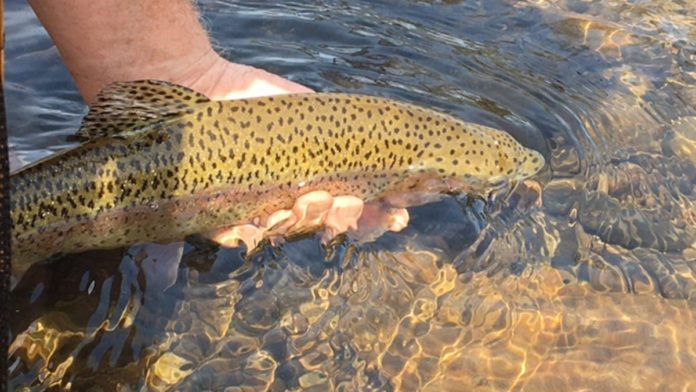As in the other outdoor sports, maybe even more so, trout fishing is soaked in tradition
Every year, the anticipation for the upcoming fishing season is different.
New equipment and gear, new knowledge and new plans all intersect in time and space for fishing on some new, but mostly old, favorite waters.
You know, home pools and riffles.
As in the other outdoor sports, maybe even more so, trout fishing is soaked in tradition.
So part of me balks at change, by reflex.
Especially this year, with huge upheavals wrought in the New York fishing regs to our trout streams, new levels of anxiety shade the longed for time on the water.
For all I know, the changes might be good or they might be bad, that is good for the trout, or bad for the fishers, or visa-versa.
But probably, once we get used to them, they’ll be ok for us all.
We both are adaptive species.
But for certain, in this crazy changing world of cyberspace, pandemics, and values, we who like to fish for trout in NYS, had better study the new regs more carefully than ever before.
Seriously. Check the regs on your favorite stream (url below.)
When I started trout fishing well over half a century ago, it seemed the regulations for catch size, minimum length, and categorization of waters never varied, or so slowly new limits were easily absorbed.
As kids, Dad took us trout fishing after “Early church” on Sunday morning. Early church was an 8 a.m. service, populated mostly by men who were able to get their religious obligation over quickly, skipping the long service and sermon that began at 11 a.m. sharp. Sometimes “Early church” was only 30 minutes long, which meant, we could get on the river quickly before the trout ducked into the shadows to escape the summer sun.
Decades later, changes.
Catch and release became popular. And a feeling of guilt for taking a few trout home to fry, started to stick like on the bottom of a poorly seasoned iron skillet.
But back then, Dad would fly-fish in the evenings after work. It was exciting for my brother and I to pull a kitchen chair up to the sink so we could see, and watch him gut his trout, usually browns and rainbows. We’d especially like the high point when he carefully opened up the stomachs on the folded newspaper on the counter, and with a sharp knife pick out what his catch had been feeding on.
Mostly mayfly and caddis fly nymphs, emergers, duns and spinners; but once in a while a caterpillar, small crayfish, a half digested minnow or angleworm populated the goop de jour.
We would fry the trout, and talk and later dream about catching them.
“The river,” to us was the Genesee River, especially the upper reaches that spill out from Pennsylvania. That’s where we fished and I still do. Home waters.
So it is with a mixed feeling of pride, stirred with swirls of trepidation too, and sure a little loss…that the waters where I learned to trout fish have now been recently designated, according to the newest New York angling regs (Tinyurl.com/TroutApril1,) as the Crème de la Crème of New York trout waters.
That’s right.
In New York state, only a handful of streams have been categorized as the best…and the upper Genesee River, from the York’s Corners bridge to the Shongo bridge, just four miles or so is now designated by the DEC as Wild Premier and Catch and Release only.
Just certain stretches of the Delaware and the Battenkill and a few others throughout NY state rate this high as these blue ribbon waters do!
That means that that four-mile stretch of the finest fly-fishing water I have ever been on is now safe for trout. Oh they can be caught, but all just pricked and then immediately released, every single one.
The Genesee River is a long river, from its genesis in Pa. all the way, 100 miles or more to Lake Ontario, and trout can be caught and kept all the way to Rochester, except for the pristine four-mile Wild Premier stretch.
And not counting the Genny’s trouty tributaries; like the Cryder, Dike’s Creek, Ford’s Brook (both North and South Branch), and the Chenunda Creek to name a few of my favorites, though with lower designations such as Wild Quality, Stocked Extended, and Wild and Stocked.
So I can still fish my favorite reaches with these new trout stream labels.
Great to stretch out my nine-foot six weight loops on what’s now called the Genesee’s Wild Premier reach.
And secondly, since the quality of the freestone coming out of Pa. is so fine, the hatches are sometimes dense, other times sporadic, and often complex enough to drive the trout crazy, and me too.
Oak Duke writes a weekly column appearing on the Outdoors page.
Credit: Source link





























